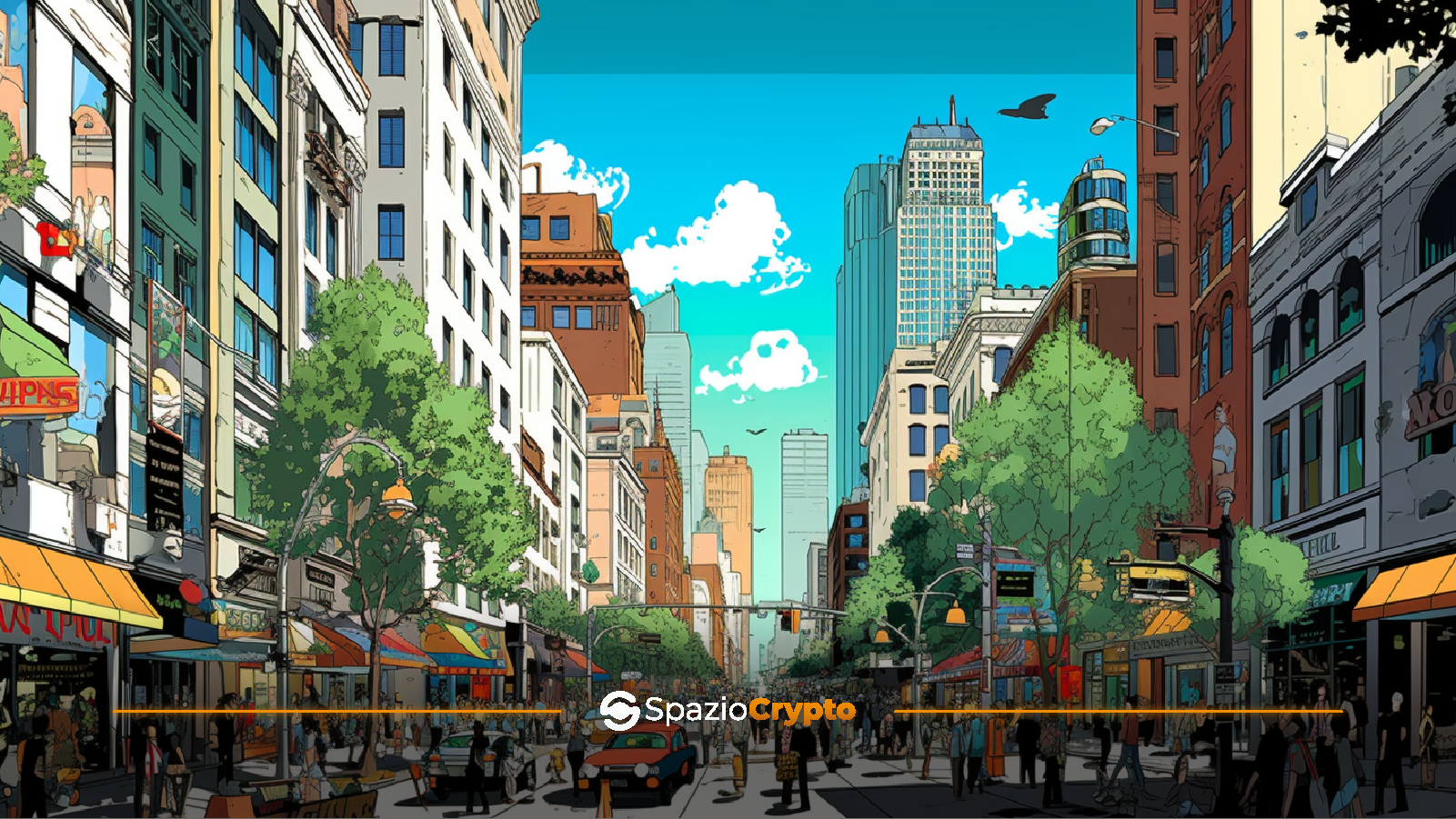
Crypto RWA (Real World Assets): Tokenisation Is Here
We will discover how RWAs are breaking down traditional barriers, opening the door to a new world of more accessible, inclusive and innovative investments.

We will discover how RWAs are breaking down traditional barriers, opening the door to a new world of more accessible, inclusive and innovative investments.

Get the latest news, learn from experts, discover new tools, and find inspiration right in your inbox.
No spam. Unsubscribe anytime.
A powerful documentary on how Bitcoin and blockchain are reshaping money, power, and geopolitics—from El Salvador’s Bitcoin experiment and Europe’s regulatory revolution to the rise of decentralized finance and the new global financial order.
The financial world is currently on the brink of a revolutionary transformation. The emergence of Real World Assets (RWA) cryptocurrencies marks the union of the tangibility of real assets and the cryptocurrency universe, opening the door to an unprecedented panorama of opportunities, as Blackrock CEO Larry Fink also argued recently about the tokenization of assets.
Imagine a world where real estate, works of art, precious metals and even trade receivables can be digitally represented as tokens, tradable on blockchain as easily and quickly as cryptocurrencies like Bitcoin or Ethereum. This is the promise of crypto RWAs, which promise to democratise access to investments, increase the transparency and efficiency of financial markets and create new opportunities for individual and institutional investors.
In this analysis of Spaziocrypto, we will dive into the world of Real World Assets, exploring how they work, their use cases and potential impact on the future of the financial system. We will discover how RWAs are breaking down traditional barriers, opening the door to a new world of more accessible, inclusive and innovative investments.
What Are Real Assets (RWAs)?
Real World Assets (RWAs) cryptocurrencies represent tangible, physical assets that possess intrinsic value, distinct from their market price. RWAs include a wide range of assets such as:
For investors seeking exposure to traditional assets, the barrier to entry can be even higher than in the crypto world. If you think about investments in real estate and commodities, for example, you will quickly realise that you need some initial capital and expertise to move into these types of investments, and that there are numerous geographical and legal barriers. With RWAs, on the other hand, you can tokenize real assets on blockchain, and make them globally accessible, and transactions can be transparent, immutable, and verified in a decentralised manner.
The Use Cases of Crypto RWAs
The emergence of RWAs opens up a range of new opportunities for individual and institutional investors. Below are some concrete examples of how crypto RWAs are being used in different sectors:
Real Estate
Artworks
Precious Metals
Trade Credits
Benefits-for-Investors
challenges and risks
Despite the challenges, the potential for RWAs to revolutionise the investment landscape is immense. Their ability to increase the liquidity, efficiency and transparency of financial markets opens new doors for individual and institutional investors, creating a more inclusive and accessible future for all.
RWA Crypto: Tokenization is Now
RWAs stand at the dawn of a revolution that has the potential to transform the global financial landscape. The integration of tangible real assets with blockchain technology opens the door to a number of opportunities that could:
However, to reach their full potential, RWAs face some challenges:
Pendle and Mantra DAO
Despite challenges such as uncertain regulation and the need for robust infrastructure, the potential of RWAs is immense. Two illustrious examples of RWAs that have gained notoriety are Pendle and Mantra DAO.
Pendle
Pendle is a DeFi (Decentralised Finance) platform that allows users to tokenize their future returns and exchange them in a liquid manner. Through Pendle's protocol, users can monetise their returns in advance, creating a new market for future assets.
Mantra DAO
Mantra DAO is a DeFi platform that aims to democratise access to financial services through decentralised governance and revenue sharing. It offers a range of products and services, including staking, lending, governance and project incubation, enabling users to take advantage of the opportunities of decentralised finance in a safe and accessible way.
With the emergence of projects such as Pendle and Mantra DAO, it is evident that Crypto RWAs are gaining ground as a driving force for innovation in the financial sector. Looking ahead, we can look forward to further developments and the expansion of RWA's role in redefining the very concept of investment and finance.
The Future of RWA Real World Assets
Crypto RWAs are set to revolutionise the investment landscape, offering an unprecedented fusion of real assets, blockchain technology, and Decentralised Finance (DeFi). Here are some key points to keep in mind:
Despite the challenges and uncertainties, the future of crypto RWAs looks promising. With effective collaboration between all players in the financial sector and clear and consistent regulation, at Spaziocrypto, we are convinced that crypto RWAs can radically transform the way we invest and interact with real assets, paving the way for a more inclusive, efficient and innovative financial future.
Read Next
AI NFT: The Future of Web3 Collections
AI NFT transforms digital assets into interactive and intelligent experiences, revolutionising the Web3.
Peer-to-Peer Networks: The Heart of the Web3
Peer-to-peer networks are the basis of Web3: they decentralise, reduce costs and increase security and resilience.
Layer 3 Blockchain: The Bridge to the Web3
Layer 3 takes blockchain beyond performance and cost: connectivity, interoperability and real Web3 adoption.
What are dApps? Decentralised Apps on Blockchain
Learn what dApps are, how they work, their benefits, risks and potential use cases on blockchain.